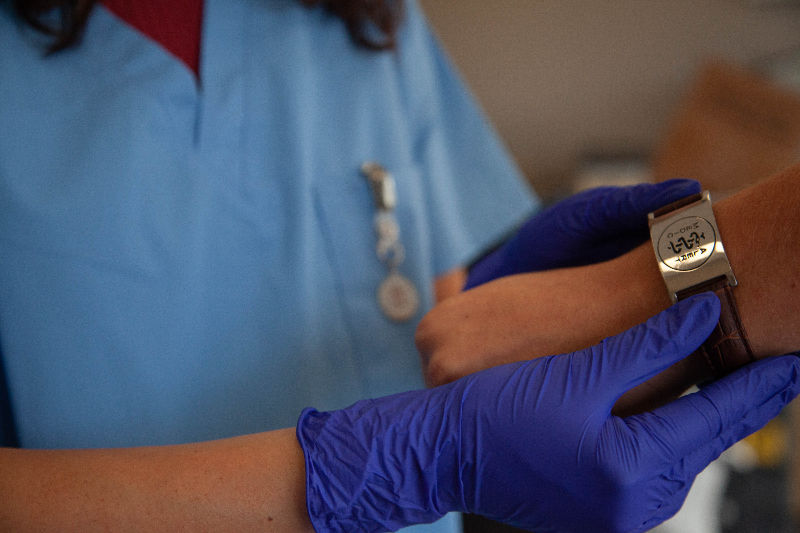How EMDR Can Help First Responders
- Oct 11, 2022
- 6 min read
Updated: Sep 4

It’s a fact that first responders face unique challenges when it comes to mental health, especially dealing with PTSD. The good news is there is a powerful and proven treatment that's helping them effectively manage their symptoms and get back to living more fulfilling lives. We've got the essential information you need to understand this breakthrough therapy.
What is EMDR therapy for PTSD?
EMDR, which stands for Eye Movement Desensitization and Reprocessing, is a type of psychotherapy that helps people heal from the symptoms and emotional distress that are the result of disturbing life experiences. Developed by psychologist Francine Shapiro, it works by helping the brain reprocess traumatic memories to reduce their impact.
Curious about how this treatment works and why it's so effective for first responders? Keep reading to dive into the details of EMDR and discover how it’s changing lives for the better.
EMDR is Powerful Tool to Help Deal With PTSD for First Responders
For first responders struggling with PTSD, there is good news: EMDR treatment may be able to help. EMDR therapy is a powerful and effective treatment for PTSD that can help address the underlying causes of symptoms, while teaching patients how to cope better with intrusive thoughts and memories, flashbacks, and other challenging aspects of PTSD.
PTSD and First Responders
PTSD, or post-traumatic stress disorder, is a psychological condition that develops in some individuals who have experienced a frightening, shocking, or dangerous event.
PTSD is common among first responders, such as paramedics, EMTs, police officers, firefighters, and rescue workers. These positions are characterized by high levels of work demand and routine exposure to both physical and psychological stress. As the first to respond to the scene of critical incidents often involving exposure to life-threatening situations, frightening events, and stressful experiences, first responders are at a higher risk for post-traumatic stress disorder (PTSD), which can overwhelm their natural ability to cope with daily work and personal stress.
Most first responders are familiar with the body’s “fight or flight” system, a physiological reaction that enables the body to react in stressful and threatening situations. After the threat has subsided, the physiological changes return to normal everyday status, because the body is no longer in the threatening situation. When PTSD is truly in effect, this “fight or flight” effect doesn’t go away and causes a continual feeling of stress, fear, and anxiety..
Signs and symptoms vary from person to person and at different stages. The three recognized categories are:
Re-experiencing Symptoms - Patients may re-experience trauma in bad dreams and/ or flashbacks that can often be extremely vivid and disruptive to daily life.
Avoidance Symptoms - Patients may make changes to avoid situations similar to the trauma (change of career, driving a new route, etc.).
Hyperarousal Symptoms - Patients may experience persistent anxiety, difficulty concentrating and/or sleeping.
Across all three categories, symptoms can take years to appear in some cases. First-responder patients with PTSD are especially symptomatic because they (a) continue to work in environments in which they may be re-exposed and (b) may return, post treatment, to the same environment.
Among professional treatment options, EMDR has been found to be particularly effective for PTSD, helping thousands of first responders learn to manage symptoms and live more fulfilling personal and professional lives. Given its effectiveness, EMDR treatment for PTSD has become increasingly available to first responders in recent years, and at relatively low cost.
What is EMDR?

Developed by psychologist Francine Shapiro in 1989, Eye Movement Desensitization and Reprocessing (EMDR) is a psychotherapy treatment designed to alleviate the distress associated with traumatic memories.
Shapiro’s Adaptive Information Processing model posits that EMDR therapy facilitates the accessing and processing of traumatic memories and other adverse life experience to bring these to an adaptive resolution.
EMDR treatment is administered through a series of sessions, each session lasting up to 90 minutes. While the total number of sessions required is patient dependent, each session involves the same basic process:
The therapist will move their fingers back and forth in front of the patient’s face and ask them to follow these hand motions with their eyes. At the same time, the EMDR therapist will have the patient recall a disturbing event, which includes the associated emotions and body sensations. Gradually, the therapist will guide the patient to shift their thoughts to more pleasant ones. This process allows the patient to develop new associations with the traumatic event(s), in an attempt to rewire the memory connections.
EMDR therapy involves attention to three time periods: the past, present, and future. Focus is given to past disturbing memories and related events. Also, it is given to current situations that cause distress, and to developing the skills and attitudes needed for positive future actions.
With EMDR therapy, all three time periods are addressed through an eight-phase treatment approach:
Phase 1: History-taking session(s). The therapist assesses the client’s readiness and develops a treatment plan.
Phase 2: Imagery and stress reduction techniques. The client learns various techniques to use during and between EMDR sessions, aimed at effective change while maintaining equilibrium.
Phases 3-6: Identifying and processing targets. The client aims to identify three things:
The vivid visual image related to the memory
A negative belief about self
Related emotions and body sensations
Phase 7: Closure. The therapist asks the client to keep a log during the week. The log should document any related material that may arise. It serves to remind the client of the self-calming activities that were mastered in phase two.
Phase 8: Evaluating progress. The EMDR treatment processes all related historical events, current incidents that elicit distress, and future events that will require different responses.
How Effective is EMDR?

While results depend on the patient’s symptoms and cause of trauma, EMDR treatment has proven effective in treating PTSD in first responders. Some studies show that 84%-90% of single-trauma victims no longer have post-traumatic stress disorder after only three 90-minute sessions.
One study found that 100% of the single-trauma victims and 77% of multiple trauma victims no longer were diagnosed with PTSD after only six 50-minute sessions. In another study, 77% of combat veterans were free of PTSD in 12 sessions.
EMDR therapy is now recognized as an effective form of treatment for trauma and other disturbing experiences by organizations such as the American Psychiatric Association, the World Health Organization and the Department of Defense. Over 100,000 clinicians throughout the world use the therapy. Millions of people have been treated successfully over the past 25 years.
If you or someone close to you suffers from PTSD as a first responder, there is help. EMDR is demonstrating impressive results in a timely and cost-effective manner. Should you or someone close to you decide to explore EMDR treatment, make sure to find a clinician who is specifically trained in the EMDR therapy method.
Ask for their experience using the process and overall success rate among PTSD patients. With EMDR, the symptoms of PTSD in first responders can be lessened, and in some cases even distanced, helping patients to live happier, more fulfilling lives.
Frequently Asked Questions
• What are the three main categories of PTSD symptoms?
The three recognized categories of PTSD symptoms are re-experiencing symptoms (like flashbacks and nightmares), avoidance symptoms (like avoiding places or people related to the trauma), and hyperarousal symptoms (such as anxiety and difficulty sleeping).
• Who developed EMDR therapy?
EMDR therapy was developed by psychologist Francine Shapiro in 1989.
• How does an EMDR session work?
During an EMDR session, a therapist moves their fingers back and forth while the patient follows the motion with their eyes. The patient simultaneously recalls a disturbing event, including associated emotions and body sensations, gradually shifting to more pleasant thoughts.
• How long does a typical EMDR session last?
EMDR sessions typically last for up to 90 minutes.
• How effective is EMDR for first responders with PTSD?
Studies have shown EMDR to be highly effective. For example, one study found that 100% of single-trauma victims and 77% of multiple-trauma victims were no longer diagnosed with PTSD after six sessions.
Write a paragraph encouraging readers to contact us at Chateau Health and Wellness Treatment Center in relation to the content of the blog. Use inclusive and ownership-focused language, emphasizing "we" and "our" to convey a sense of shared responsibility and support. Include the phone number (435) 222-5225 and a call-to-action that reflects a commitment to helping those in need in reference to the content below.

About The Author
Ben Pearson, LCSW - Clinical Director
With 19 years of experience, Ben Pearson specializes in adolescent and family therapy, de-escalation, and high-risk interventions. As a former Clinical Director of an intensive outpatient program, he played a key role in clinical interventions and group therapy. With 15+ years in wilderness treatment and over a decade as a clinician, Ben has helped countless individuals and families navigate mental health and recovery challenges.








